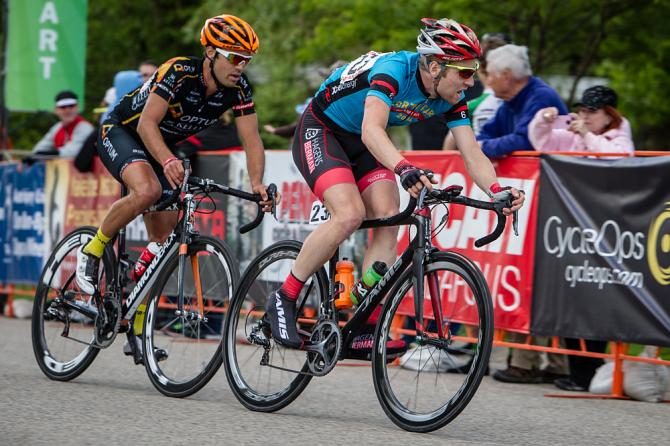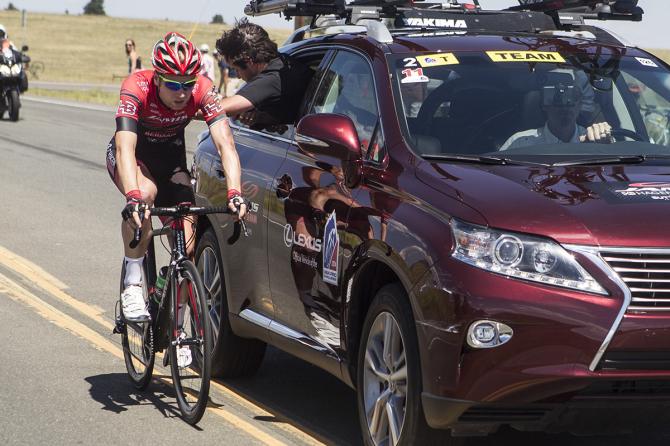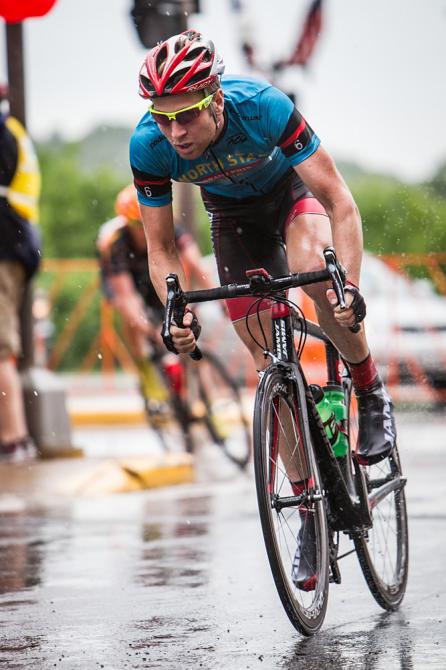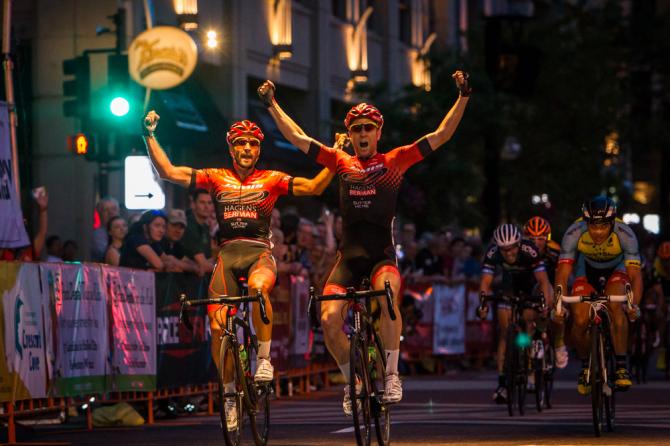Crane continues to recover from life-threatening crash
Jamis-Hagens Berman re-signs Joe Martin winner




Ian Crane will return with Jamis-Hagens Berman next season following his recovery from life-threatening injuries suffered in a crash at the USA Pro Challenge in August. Crane made the announcement earlier this week on Twitter, thanking team director Sebastian Alexandre for having faith that he will return to form in 2015.
“That was a pretty incredible feeling for me,” Crane told Cyclingnews. “I had been in talks before the accident, but I hadn't had anything dialed yet. My actual official offer came when I was in the hospital. I had a pretty great season anyway, but with this, where next year is a question mark, it was nice not having to worry about whether I had a job or not.”
Crane has been convalescing at home in Seattle, Washington, after being hospitalized for three weeks following a crash through the rear window of a team car, an accident that occurred about 15km into the final stage and nearly brought the entire Colorado race to a premature end.
Crane had initially crashed lightly while fighting through crosswinds as the peloton raced out of Boulder August 24 toward the finish in Denver. He quickly remounted and was chasing back through the race caravan when he smashed through the rear window of a car that had suddenly stopped in front of him.
The 24-year-old, who had taken his first National Race Calendar overall win just four months earlier at the Joe Martin Stage Race, broke multiple bones in the crash and suffered a traumatic brain injury. But the most immediate concern that day was the massive blood loss from deep lacerations that stretched from his face, across his neck, to his chest – including a nick to his jugular vein. The Denver Post reported that organizers considered stopping the stage when word began to spread erroneously that Crane had died at the scene.
The seriously injured rider was airlifted to a nearby hospital, where doctors performed emergency surgery and sedated him for several days. Crane spent two weeks in the Colorado hospital recovering from the multiple operations that left him with thousands of stitches and staples to close his wounds. Aside from the lacerations and brain injury, Crane broke his scapula and another bone in his skull, tore several tendons in his neck and chipped four of his front teeth in half.
Crane flew home for a third week of recovery in a Seattle medical center before his eventual release last month. He is currently undergoing outpatient therapy while his body and mind continue to recover.
Get The Leadout Newsletter
The latest race content, interviews, features, reviews and expert buying guides, direct to your inbox!
“The recovery has been better than anyone could have expected,” he said this week. “The little things – and it's funny to call a broken scapula a little thing – but that sort of stuff is all healing up. I have no more open wounds or anything. Just scars. So the skin is healing.”
Crane said that although the physical wounds are showing obvious signs of healing, the brain's recovery is harder to quantify. Crane was able to communicate immediately after he regained consciousness in the hospital, but as he began to speak he sometimes had trouble finding the right words. Crane has long moved past that phase and speaks well now, but there are still issues with balance and perception. He said he does two to three hours of prescribed brain “homework” every day.
“I see the brain specialist this week actually, so maybe I'll get a more quantifiable understanding of how the head injury is healing,” he said. “But as far as the other easy-to-quantify stuff, it's going rapidly. My scapula was healed in about half the time as the normal scapula fracture. So I'm hoping the brain will be following the same path.”
That Crane is around to speculate about recovery and racing next season is a miracle in and of itself, something he credits to an incredibly “lucky sequence of events” before and after his crash. After Crane's initial spill just outside of Boulder, one of the race medics called for the medical car to follow Crane through the caravan to make sure he was not injured in a way that the initial responders hadn't noticed.
“Because of this precaution,” Crane wrote on his own blog, “I had the best possible care very quickly; … the man in the main med car following me was a trauma surgeon, and he pinched off and sewed my jugular up within seconds of going through the window.”
Crane's next bit of luck occurred because the helicopter ambulance that would eventually transport him to the trauma center in Lakewood had just recently set down nearby to watch the race pass by.
“I went through the window around 800 feet from where the helicopter had landed, which ensured that I made my way to the trauma hospital as soon as was possible,” Crane recalled on his blog.
Crane's luck continued when he was taken to St. Anthony Hospital, a Level 1 trauma center that is the best in the state for brain injuries. After 13 days at St. Anthony, team sponsor Steve Berman flew Crane and his family in his private jet from Colorado back home to Washington for another week of care at the University of Washington rehab center.
Crane has been on the receiving end of life-saving medical care and first-class travel, but he is especially touched by the many people inside and outside of cycling who reached out to him or his family to lend their support.
“I was just incredibly grateful for anyone that told me they were thinking good thoughts or praying for me,” he said. “I had so much go right for me that I feel like I had a lot of people behind me. … It was interesting to see the human side of some bike racers and not just the bike racer side. It's just a different level, and I think the bike racing community is a pretty incredible one. The cycling community showed up for me, and I'm pretty grateful.”
One of the people reaching out to Crane was Davis Phinney, the former 7-Eleven pro who crashed similarly when he went through the rear window of a team car during Liège-Bastogne-Liège in 1988.
“I kind of view this as a worst-case-scenario type freak accident,” Crane said, explaining the rare nature of the experience he and Phinney now share. “As bike racers we understand the role that cars in the caravan play, but I think in the back of all our minds there's sort of a 'what if' involving the cars. So it's pretty crazy to think that this has happened to me, and then one other guy. But it's part of the beauty of our sport. There's a lot going on in general.”
The sentiment is typical of Crane's positive outlook, always searching for the silver lining, even among the dark clouds that arrived that day in Colorado and are still slowly dissipating. He expressed that same positive attitude with characteristic humor near the end of a blog post last month.
“Quick thought,” Crane wrote in his first update after the crash. “In 2012 I crashed heavily at the Joe Martin Stage Race. In 2014 I won the Joe Martin Stage Race. By this logic, I will win the 2016 USA Pro Challenge. Take note.”
Growing up in Missoula, Montana, Pat competed in his first bike race in 1985 at Flathead Lake. He studied English and journalism at the University of Oregon and has covered North American cycling extensively since 2009, as well as racing and teams in Europe and South America. Pat currently lives in the US outside of Portland, Oregon, with his imaginary dog Rusty.